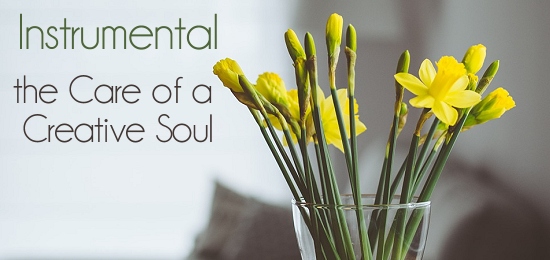
We’ve been under the powerful influence of retrograde planets lately. We’ve just completed a Venus retrograde and right on its heels, a Mercury retrograde began. A long list of “re-”s accompany these retrogrades: regret, remorse, review, redo, revisit, revise, re-evaluate; sometimes the “re”turn of ghosts from the past. All of these can be gifts to us. They’re an invitation to look to the past for what’s “re”levant and use it to our best benefit in the present.
The Venus retrograde through Libra and Scorpio increased passion and sexual tension. This affected real-time interactions with current or former lovers and partners – or both. It also affected dreams and memories, with the past springing up at unexpected moments.
Did you feel a longing for the past? Did your memories of a relationship with a former lover make you feel uncomfortable? Sad? Aroused?
 My own surfacing memories prompted me to meditate on the Six of Cups – the Minor Arcana Tarot card that keys to reminiscence, return and memories of past experiences and associations. In short, the card is symbolic of nostalgia. This card’s astrological correspondence is the Sun in Scorpio.
My own surfacing memories prompted me to meditate on the Six of Cups – the Minor Arcana Tarot card that keys to reminiscence, return and memories of past experiences and associations. In short, the card is symbolic of nostalgia. This card’s astrological correspondence is the Sun in Scorpio.
In the Rider-Waite-Smith Tarot there is less emphasis on the sexual aspects of the Sun in Scorpio. Its general meanings are nostalgia, revisiting the past, recalling childhood memories, and also joy and pleasure. In reverse and under the influence of the Venus retrograde – we may have discovered that we were clinging to the past or trying to live in the past; dwelling on past hurts and disappointments; yearning for past relationships or people that were not healthy for us or that we’ve outgrown and no longer serve us.
Using the Crowley-Harris or Thoth Tarot, the general meaning of the card is more centrally focused on the most natural expression of the Sun in Scorpio. All forms of pleasure – including sexual fulfillment – are inherent in this card. There is both a depth and a natural transcendence here that goes beyond the momentary gratification of desire. In union with another, the whole is greater than the sum of its parts. This is our highest consciousness expressed through our emotions and feelings. If ill-dignified – as is possible under the influence of retrograde Venus transiting Scorpio – unhealthy sexual expression, jealousy and attracting the wrong partners may have been the outcome.
Our longing for the past – that sometimes inexplicable deep-dive into memories and feelings – all slightly tinged with melancholy, can take up a lot of emotional real estate.
I experienced a series of highly-detailed and vivid dreams about some of my past lovers. On many mornings I woke feeling almost hungover, thinking about the past and re-experiencing feelings I hadn’t examined for many years. I will confess to some quick Google searches (I plead human frailty). To my credit, I didn’t take any impulsive or potentially destructive actions.
But I did allow myself to reframe my feelings and put them into the context of my present life (pretty damn good) and my present relationship (damn good). I can’t claim to have learned something completely new but I was able to look at the present from a refreshed, positive and contented perspective. The gift of a retrograde indeed.
Then, just as Venus stationed direct on November 16th, Mercury went retrograde. Although it will spend a brief portion of this retrograde in Scorpio, most of this transit will be through Sagittarius. During 2018 all of the Mercury retrograde periods have been in Fire signs – Aries, Leo and now Sagittarius.
The energy of Mercury in Sagittarius can be difficult to manage. This planet and the sign have much in common such as communication, travel and education. But Mercury the Messenger is more concerned with the local, short-term and specific while Sagittarius the Archer has his arrow aimed at the higher, long-term and global aspects of these areas. Reconciling these as complementary energies or allowing them to cause conflict is the challenge.
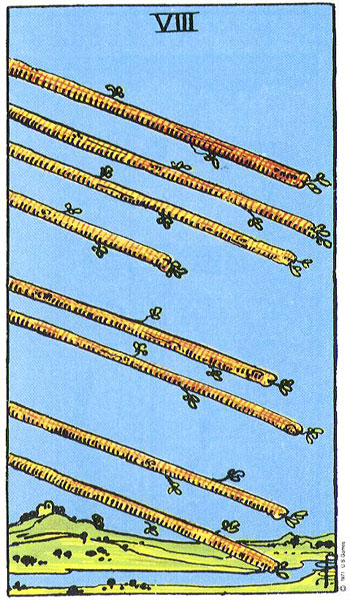 The Minor Arcana Tarot Card corresponding to Mercury in Sagittarius is the Eight of Wands. Both the Rider-Waite-Smith and Crowley-Harris (Thoth) Tarot share the general meaning of this card: swiftness, action, ambition, travel and rapid transmission of information; dynamic events and communication.
The Minor Arcana Tarot Card corresponding to Mercury in Sagittarius is the Eight of Wands. Both the Rider-Waite-Smith and Crowley-Harris (Thoth) Tarot share the general meaning of this card: swiftness, action, ambition, travel and rapid transmission of information; dynamic events and communication.
When reversed or ill-dignified as they may be under the influence of Mercury retrograde – there may be communication breakdowns, misunderstandings, technological glitches or failures, anxiety, tension, delayed or canceled travel plans and a slow-down or stop to our activities.
In addition this retrograde shares with the Venus retrograde the tendency to dwell on former experiences, reminisce about the past, or unexpectedly meet up with people from your past.
See? True to retrograde form, we’ve returned to where we started. Catch you on the flip side.
About the Author: Dona Murphy
 Dona Murphy is the owner of Destiny Tarot. She lives and works in Lake Bluff Illinois as a Tarot reader, Intuitive Counselor and Life Coach. Dona combines her metaphysical and spiritual studies, natural gifts and real-world experience to help her clients solve problems and live their best lives. As she says, “The cards don’t predict your future, they help you create it”.
Dona Murphy is the owner of Destiny Tarot. She lives and works in Lake Bluff Illinois as a Tarot reader, Intuitive Counselor and Life Coach. Dona combines her metaphysical and spiritual studies, natural gifts and real-world experience to help her clients solve problems and live their best lives. As she says, “The cards don’t predict your future, they help you create it”.


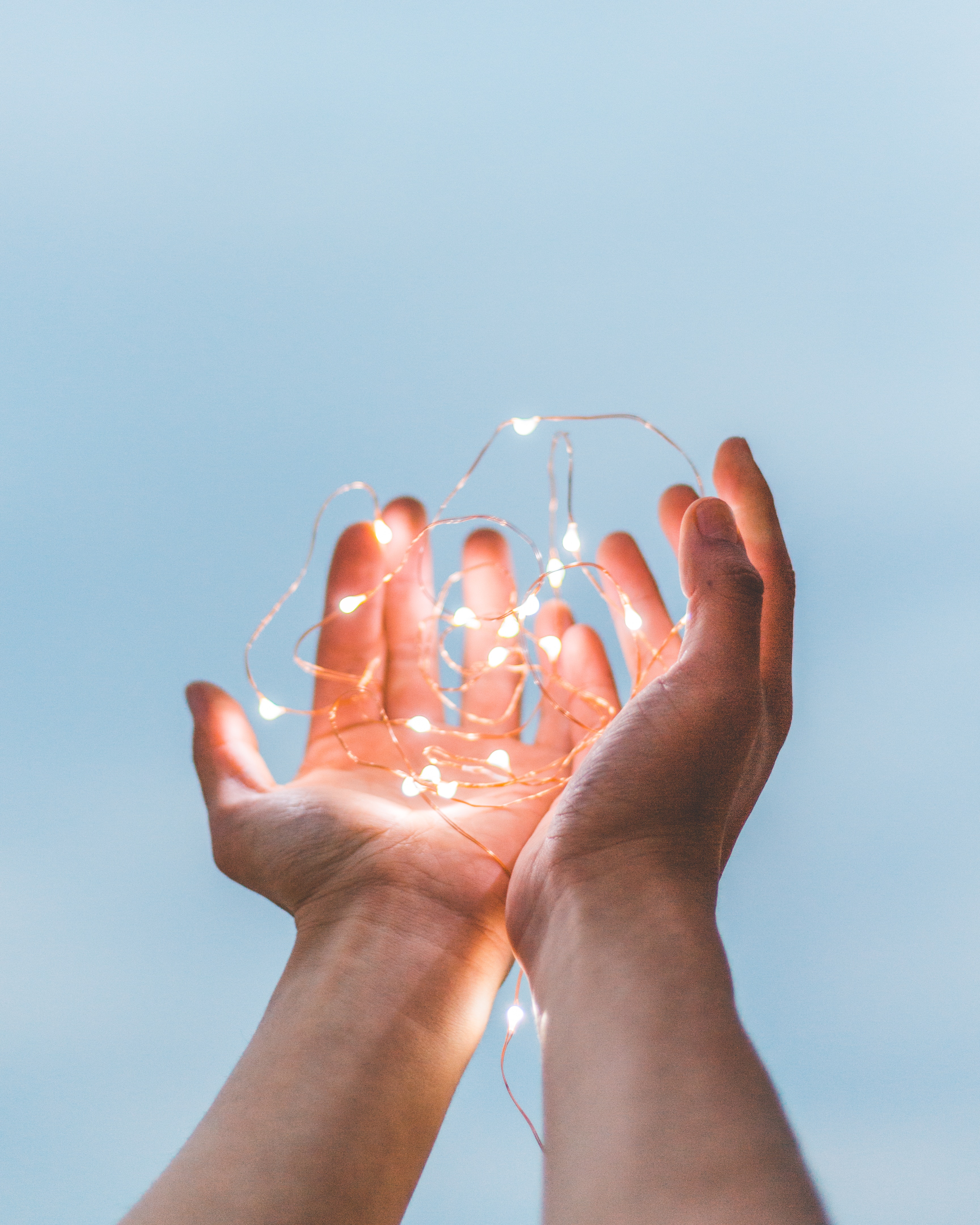 Thick as thieves we were. We’ve since broken up like the Taylor Swift and Kanye West fiasco of whatever year that was. All I know is that at the end of 2015 I had had enough of Anxiety and the bullshit it had been whispering in my ear. Anxiety and it’s devious friend Depression were at an all time high. Stalking me left and right. Telling me that things were going to implode if I didn’t follow the direction they had planned out for my life. If I didn’t listen to everything they were telling me was true, I’d be screwed. That my life, as I’d built it from that moment would cease to exist. In the end I would be found wanting and lonely, dragging my loved ones down with me. “Follow us,” they whispered, “we know the way,” they’d hiss. I remember sitting on the couch thinking, “how can this get any worse?”
Thick as thieves we were. We’ve since broken up like the Taylor Swift and Kanye West fiasco of whatever year that was. All I know is that at the end of 2015 I had had enough of Anxiety and the bullshit it had been whispering in my ear. Anxiety and it’s devious friend Depression were at an all time high. Stalking me left and right. Telling me that things were going to implode if I didn’t follow the direction they had planned out for my life. If I didn’t listen to everything they were telling me was true, I’d be screwed. That my life, as I’d built it from that moment would cease to exist. In the end I would be found wanting and lonely, dragging my loved ones down with me. “Follow us,” they whispered, “we know the way,” they’d hiss. I remember sitting on the couch thinking, “how can this get any worse?” As I walk with Faith and Hope, Love appears on the horizon. “We kept the best for last,” they say in unison. I look over at them smiling, almost giggling for Love is amazing! She prances over to where we are giving me the biggest hug I’ve ever received. Holding me at arms length she looks me up and down and nods her head approvingly. “You look GOOD! I knew you’d make it!” I look her in the eye and confess, “I wasn’t so sure there for awhile, but hey, I guess it was a thing.” She laughs at me knowing all too well that it definitely was a thing. We split off from the others as we walk to the top a hill. The grass seems greener here, the air fresher. She wants to show me something, and I fall in beside her.
As I walk with Faith and Hope, Love appears on the horizon. “We kept the best for last,” they say in unison. I look over at them smiling, almost giggling for Love is amazing! She prances over to where we are giving me the biggest hug I’ve ever received. Holding me at arms length she looks me up and down and nods her head approvingly. “You look GOOD! I knew you’d make it!” I look her in the eye and confess, “I wasn’t so sure there for awhile, but hey, I guess it was a thing.” She laughs at me knowing all too well that it definitely was a thing. We split off from the others as we walk to the top a hill. The grass seems greener here, the air fresher. She wants to show me something, and I fall in beside her. Keva Bartnick is an artist, writer, and lightworker. Happily married mother of three; she’s been inspiring people to be their most courageous selves since 2015.
Keva Bartnick is an artist, writer, and lightworker. Happily married mother of three; she’s been inspiring people to be their most courageous selves since 2015.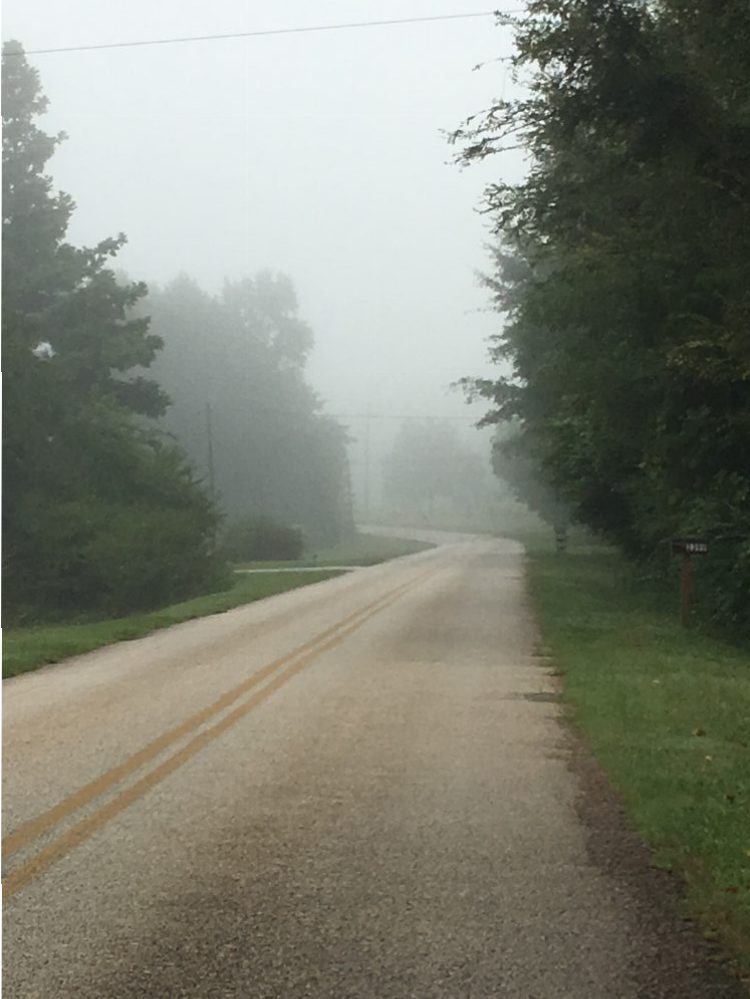





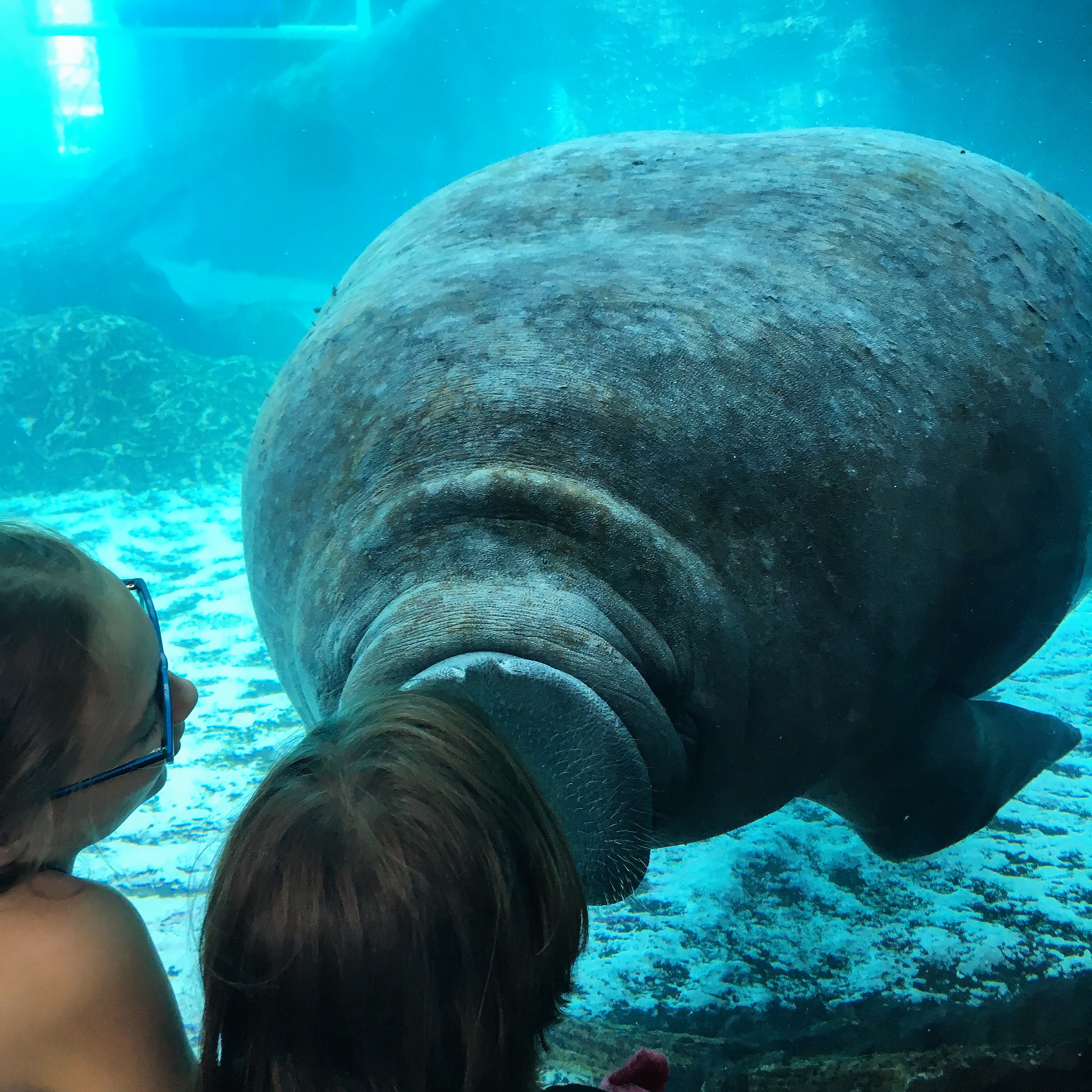

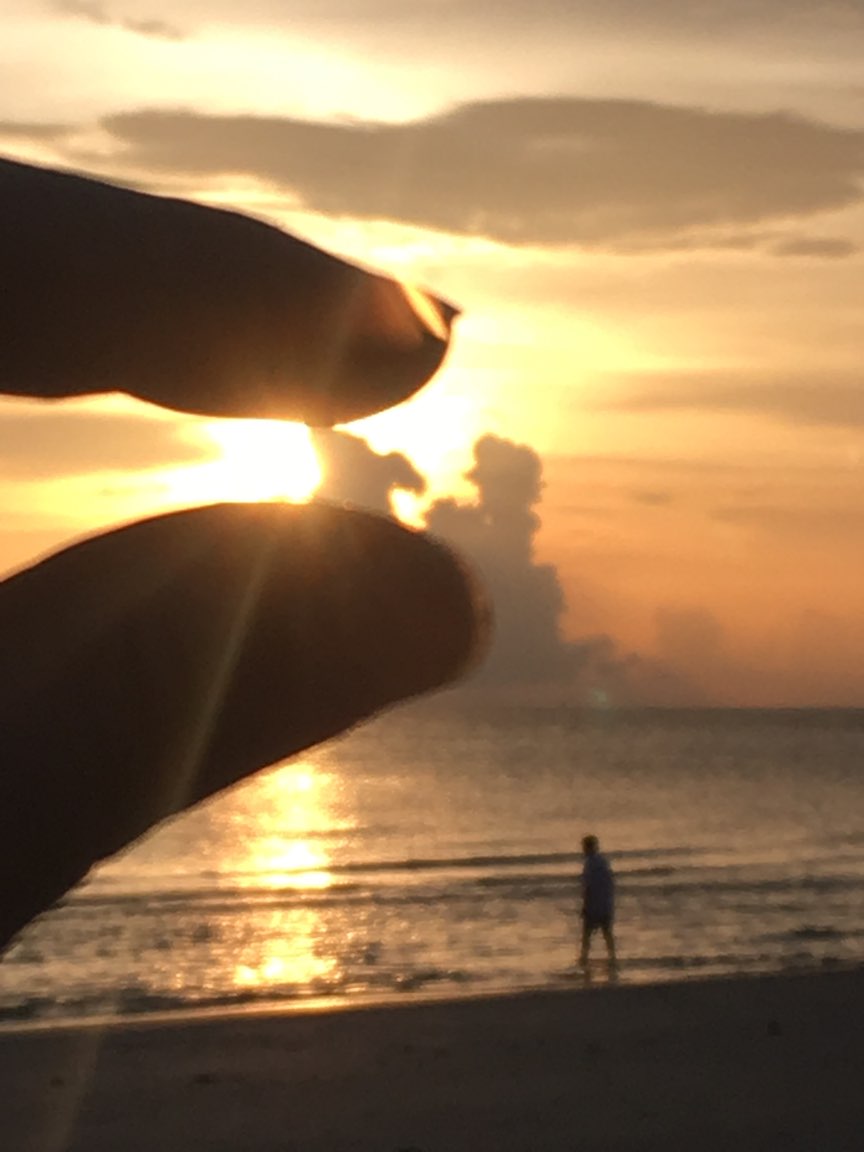
 Keva Bartnick is an artist, writer, and lightworker. Happily married mother of three; she’s been inspiring people to be their most courageous selves since 2015.
Keva Bartnick is an artist, writer, and lightworker. Happily married mother of three; she’s been inspiring people to be their most courageous selves since 2015.
 We all need downtime, private time. In fact, for some of us, it’s essential.
We all need downtime, private time. In fact, for some of us, it’s essential.
 After a long career in public broadcasting, Jeanie Croope is now doing all the things she loves — art, photography, writing, cooking, reading wonderful books and discovering a multitude of new creative passions. You can find her blogging about life and all the things she loves at
After a long career in public broadcasting, Jeanie Croope is now doing all the things she loves — art, photography, writing, cooking, reading wonderful books and discovering a multitude of new creative passions. You can find her blogging about life and all the things she loves at  Can she be free?
Can she be free? It’s a good job and you make good money, but the people that you work with are the gossipy, office shark type. You’re not really good with office politics so you keep your head down and are quiet all of the time. Always.
It’s a good job and you make good money, but the people that you work with are the gossipy, office shark type. You’re not really good with office politics so you keep your head down and are quiet all of the time. Always.



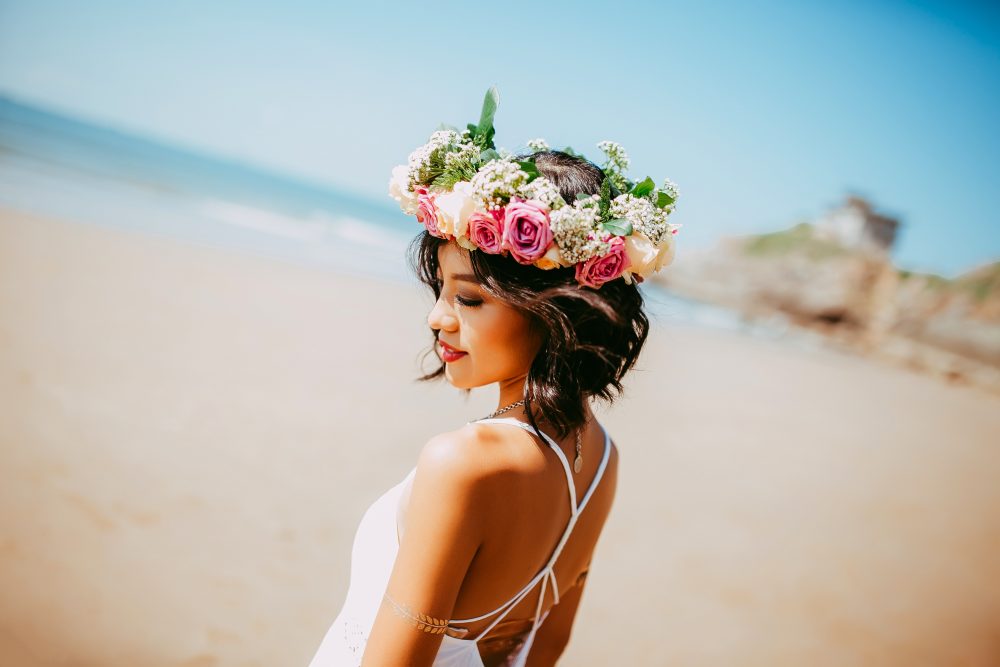



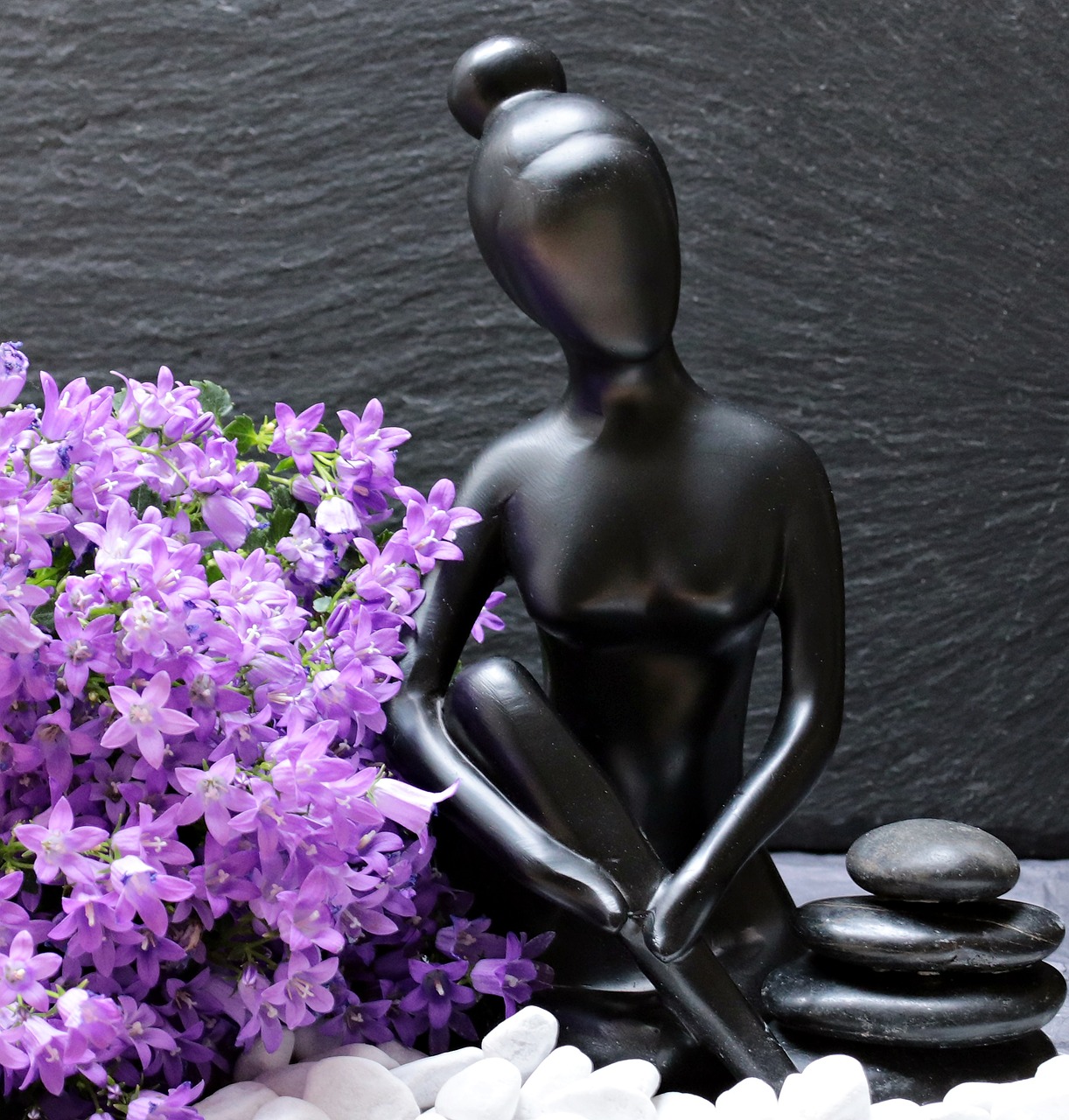


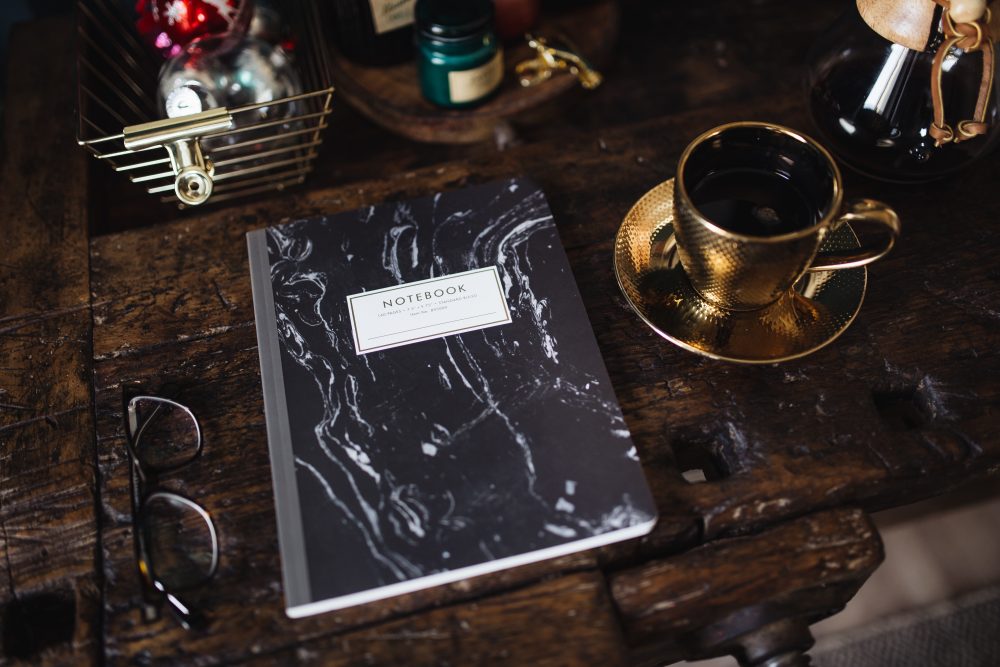

 Writing about a marital survivor with respect and authenticity meant interviewing women who had been through this heinous crime; talking to experts and psychotherapists to understand what danger at home can do to a woman; and, reading up immensely on all the information available on rape within a marriage.
Writing about a marital survivor with respect and authenticity meant interviewing women who had been through this heinous crime; talking to experts and psychotherapists to understand what danger at home can do to a woman; and, reading up immensely on all the information available on rape within a marriage. Sweta
Sweta